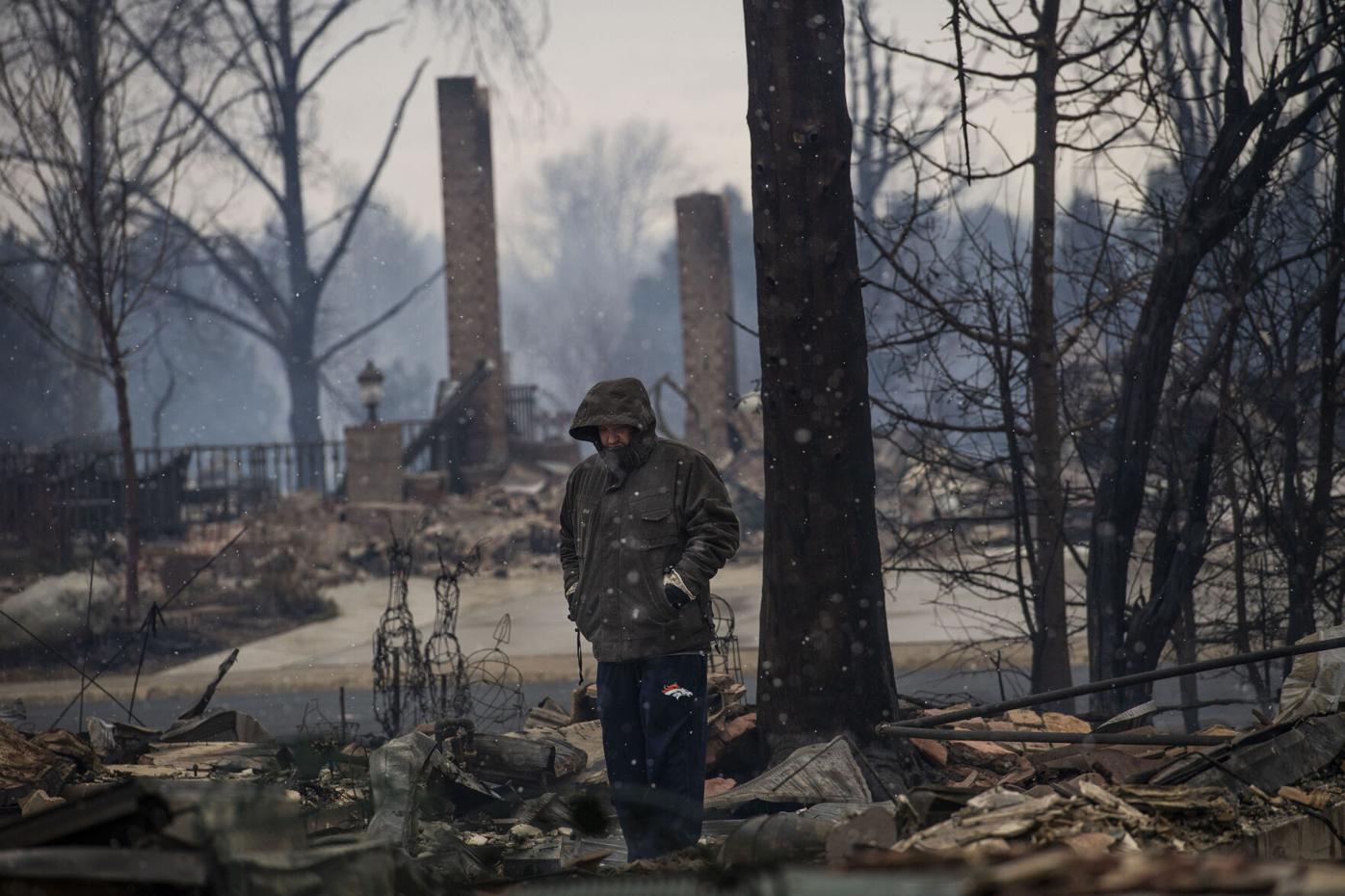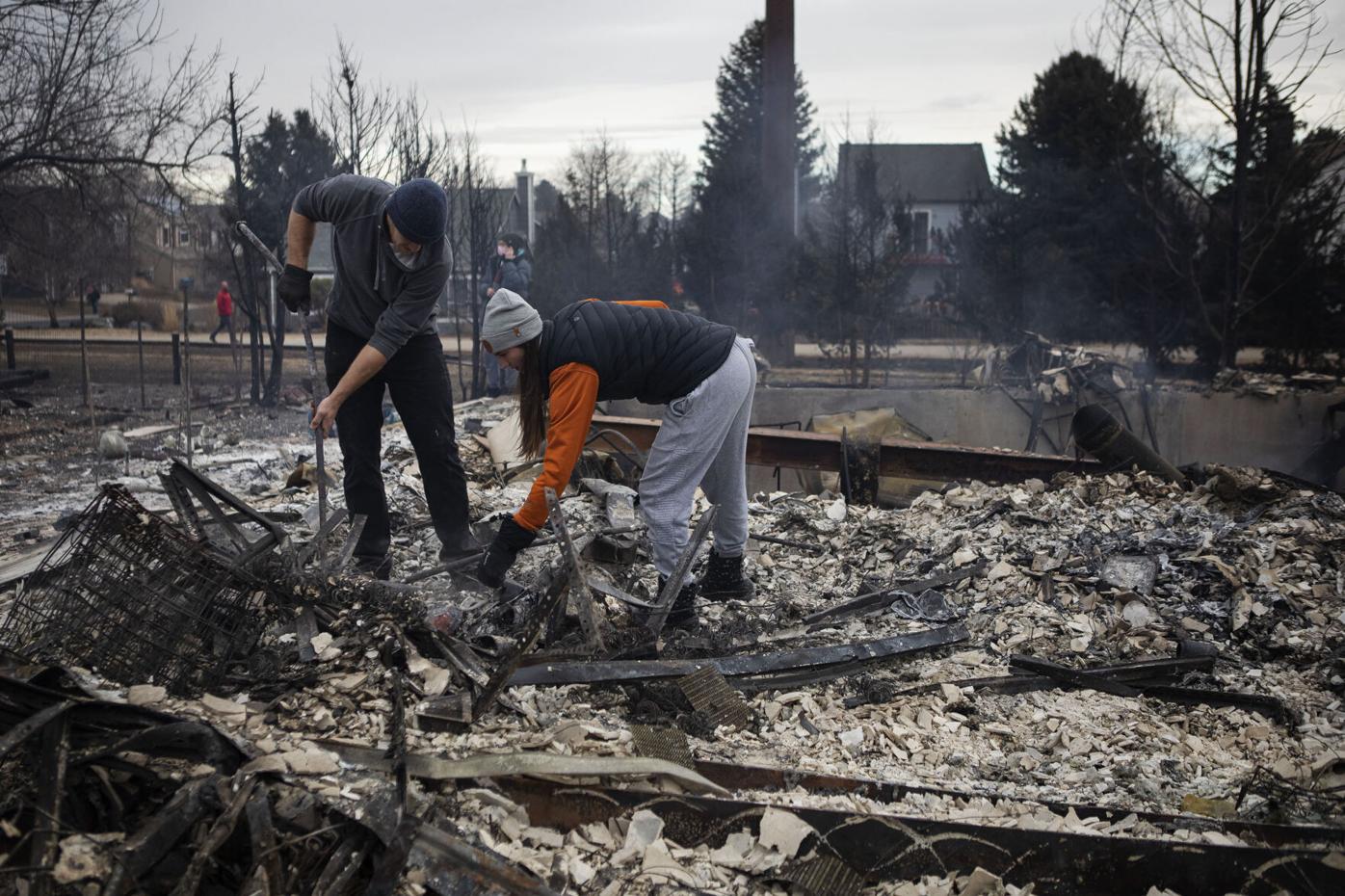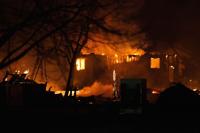How several Colorado efforts after major wildfires are taking shape
Wildfires are a major threat not only in Colorado, but across the West, where drought conditions and vast spaces of open land prevail.
These disasters are especially dangerous in the wildland urban interface — where the environment meets highly-developed, and heavily-populated, areas.
Colorado’s most destructive wildfire was the Marshall fire, which ignited on Dec. 30, 2021 and caused an urban conflagration that burned more than 1,000 homes and businesses in Boulder, Louisville and Superior and killed two people.
Earlier this year, Los Angeles was hit by several wildfires that caused an estimated $28 billion and $54 billion in property damages and about 30 people died.
“The 2020 big wildfires [in Colorado] and the Marshall fire have set an impetus for action,” said Anne Miller, director of the Colorado Resiliency Office, on a panel in front of national real estate developers Thursday.
Colorado wildfire outlook 'normal' — but normal has new meaning in wildfire-prone state
At the Urban Land Institute’s opening session for their Resilience Summit, hosted at the Hyatt Regency Hotel in Downtown Denver, experts held a discussion titled “Preventing the Next Palisades Disaster – Learning from Colorado Wildfires” about the lessons learned and steps taken after major urban disasters.
One major initiative Miller highlighted is the state’s Natural Disaster Mitigation Enterprise, which charges insurance agencies a fee for having certain policies to fund grants to give local governments to finance their wildfire prevention efforts.
The first grants went out this year, totaling $4.8 million, to agencies like Glenwood Springs, Commerce City, Jefferson Conservation District, Evergreen Fire and Rescue and the Platte Canyon Fire Protection District.
While wildfire recoveries get financial assistance from federal and state funding, which can help, the cost is mostly taken on by insurance, Miller said.
But she added there are major gaps as rising housing costs are leaving more people uninsured.
Insurers also don’t always cover upgrades to homes, said Molly Mowery, executive director of Community Wildfire Planning Center, a non-profit based in Littleton focusing on wildland urban interface regions in the West.
But she added there’s been a recent push to incentivize insurers to accept certificates from local government agencies like Boulder, Jefferson and Eagle County given after homeowners strengthen their homes as proof to help lower rates.
“You can show that certificate to your insurer,” Mowery said. “And in some cases, the insurance company is valuing that.”
The Big One: Is Metro Denver prepared for L.A.-strong conflagrations?
Government assistance also shouldn’t be seen as guarantee for recovery efforts in the future, she said.
“What we even learned from the past several decades of recovery is we almost can’t look at them in the same way anymore and think that would be the precedent,” Mowery said.
“We’re having to really rethink where our hazard mitigation investments are going to come from and where will recovery come from?” she added. “Because that dynamic is radically changing.”

FILE PHOTO: The Marshall fire engulfs a home in Louisville, Colo., Thursday Dec. 30, 2021 as crews worked through the night battling the blaze in Boulder County. (The Gazette, Christian Murdock)
Christian Murdock/The Gazette

FILE PHOTO: The Marshall fire engulfs a home in Louisville, Colo., Thursday Dec. 30, 2021 as crews worked through the night battling the blaze in Boulder County. (The Gazette, Christian Murdock)
There’s one new development in wildfire rebuilding efforts: Artificial intelligence.
The technology is gaining traction as the number of staff at agencies are limited after a crisis. Permitting can get bogged down by the influx of requests for permits to rebuild.
In a first-of-its-kind effort, L.A. officials announced this week they will use A.I. to speed up permitting using software from Australian tech firm Archistar, the Los Angeles Times reported. The system will examine applications for compliance with zoning and building codes and create a report for human staff to check and review.
A German company detects wildfires from space. It made Denver its U.S. hub.
“We have a ton of information and data,” Mowery said about using A.I. in building after a disaster or for preventative measures. “We don’t have a shortage of knowing what the problem is. We have a shortage of the time and capacity to work with people directly.”
Colorado is in the process of placing a minimum statewide building code for homes in wildfire prone areas.
The state created a Wildfire Resiliency Code Board, which is set to release its final draft of code changes soon, with a public hearing set in late June.

FILE PHOTO: A man views the remains of his father’s house Friday at the Enclave subdivision near Davidson Mesa Open Space in Louisville.
Chancey Bush/The Gazette

FILE PHOTO: A man views the remains of his father’s house Friday at the Enclave subdivision near Davidson Mesa Open Space in Louisville.
El Paso County developer Joe Loidolt, president of Classic Homes, sits on the code board and shared a few things to expect from the updated code on Thursday’s panel.
As the state board is working to push builders to harden new and remodeled homes to make them more resilient, Loidon also explained the new minimum standard set across the state won’t apply to existing structures, meaning older homes in wildfire-prone areas will continue to have higher risk.
Colorado’s wildfire code used the International Wildland-Urban Interface Code as a blueprint, Loidolt said, but it would be too difficult to implement fully statewide.
“We did pull out water accessibility and those things because that’s really getting into the weeds,” he said. “That’s really a local thing to try to figure out.”
He also explained the international standard requires rating every site, which many local agencies may not have enough staff to do in a timely manner.
Loidolt also explained there’s a tough balance in building resilient homes and making sure they’re affordable.
As Colorado faces some of the highest housing costs in the nation, Type IV construction — using fire-resistant materials — is out of reach for many households financially.
“We took that approach of trying to get to what’s worth the value,” Loidolt said. “And we’ve taken that approach to the state board.”
“What will get us 90% to 95% of the way there? That last 10%, that costs double what everything else costs, may not be worth it,” he added. “But at least then maybe we can get this put in more homes.”







